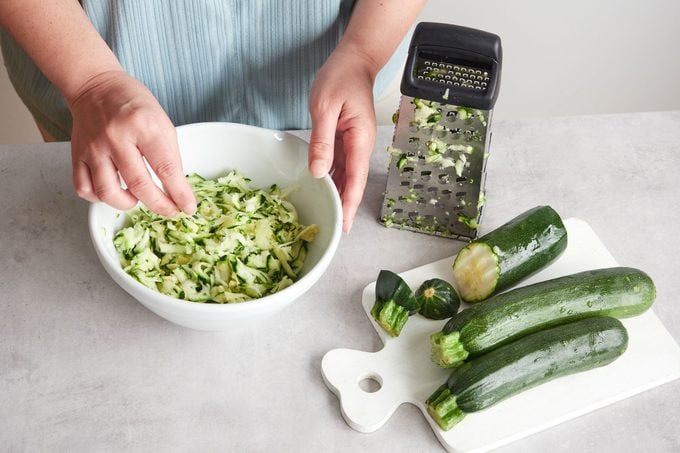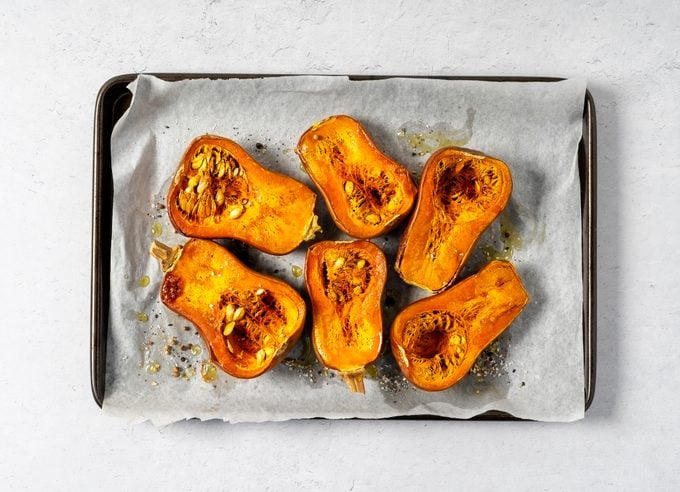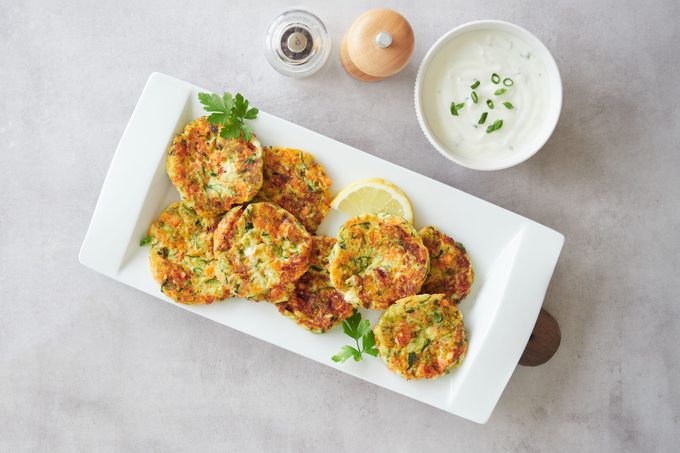How to Freeze Squash, Both Summer and Winter Varieties
Updated: Mar. 26, 2024

Enjoy your harvest year-round when you learn how to freeze squash. This guide shares different techniques to keep different types of squash as fresh as possible.
There’s an unusual holiday on August 8 for people with overproductive gardens: “National Sneak Some Zucchini onto Your Neighbor’s Porch Day.” This celebration reminds us to share our bounty of produce with friends who live nearby, knowing full well that they also have bumper crop of summer squash!
The tradition sounds silly, but stems from a real problem. What do you do when your plants grow an astonishing amount of zucchini? You learn how to freeze squash.
This guide covers how to freeze summer squash—think zucchini, yellow squash and pattypan squash—as well as winter squash like butternut and acorn. In all cases, pack your squash into freezer-safe bags, and use a vacuum sealer if you have one. Of course, follow best practices to prevent freezer burn. Even though you can safely eat freezer-burned food, the quality is not as good.
Can you freeze squash?
Yes! There are a variety of ways to prepare squash for freezing. The method you choose depends on whether you’re dealing with summer squash or winter squash and how you eventually plan to use the squash.
The Best Squash for Freezing
Choose a squash that’s firm and plump. If a squash is blemished or has soft spots, it’s better for immediate use.
- Summer squash: Unlike their winter cousins, summer varietals are fairly similar in the thickness of their skin and the texture of their flesh. This means that any summer squash you encounter, no matter its shape or size, is an excellent candidate for freezing. Choose squash that are firm, not soft or squishy.
- Buttercup squash: Sweet and delicious, some people compare the flavor of buttercup squash to sweet potatoes. Though all winter squashes freeze nicely, I like to freeze the most flavorful ones.
- Kabocha squash: This winter variety has a bright red-orange exterior and tender, sweet flesh that’s perfect for baked recipes and roasting.
- Hubbard squash: These are delicious and large winter squash, so the best of both worlds when it comes to processing! The larger the squash, the more fruit you can store away for recipes like this Hubbard squash pie.
How to Freeze Squash
Summer squash

There are a few different ways to prepare summer squash for the cold. Here are some favorites:
- Rounds or chunks: If you plan to saute your squash later or use it in stir-fry dishes, choose this method. Cut the squash into thick rounds or chunks, and plunge the pieces into boiling water for 30 seconds to blanch the flesh. When the cooking time is up, drain the squash and drop it into an ice bath to stop the cooking process. Freeze the pieces on sheet pans in a single layer, and when frozen, pop them into freezer-safe bags. Don’t forget to label and date the bags.
- Shredded: Rinse and shred squash into a colander using the biggest holes on a box grater. Squeeze the squash to remove excess water, and pack it into freezer-safe bags. Voila! The squash will be soft and squishy when it thaws, which makes it perfect for baked goods such as zucchini bread.
- “Squash butter:” To freeze a ready-made product, make sweet or savory squash butter. Grate the zucchini as above, and gently cook it with butter and other seasonings until it has thickened to a jam-like consistency. For the savory version, I use butter, garlic and fresh herbs. For a sweet version, I add brown sugar or maple syrup, cinnamon and any other “pie spices” I happen to have on hand. Either one is a great spread for bread.
Winter squash

Winter squash vary more widely than summer squash, so the best method for freezing a particular type of squash will depend on its characteristics.
- Hard-to-peel squash: These squash—types that have distinct “turbans” or deep grooves—are most easily processed by roasting. Cut the squash in half, scoop out the seeds and stringy bits, and place the halves face down on oiled parchment. Roast at 400°F until tender all the way through. Scoop out the flesh, let cool a bit, pack into freezer-safe bags and freeze. If you’d like perfectly smooth squash, puree the squash prior to freezing.
- Other squash: If you have squash with smooth skins, you can still roast them as above, but you can also peel them and cut them into cubes before freezing. The cubes should be fairly uniform in size so that they’ll cook evenly when it comes time to use them, but you don’t need to blanch them before freezing. Simply spread the cubes on sheet pans and freeze them, then package them into freezer-safe bags.
- Spaghetti squash: Use this guide to freeze spaghetti squash. You don’t even need to thaw it when you’re ready to use it in recipes because it’s been previously cooked.
How to Use Frozen Squash

Frozen summer squash recipes
When frozen summer squash thaws, it gets pretty soft and moisture comes to the surface. If you’re adding chunks or rounds of squash to recipes like soups or zucchini casseroles, you don’t need to thaw them first. If you want to use shredded zucchini in baked goods, thaw the zucchini in the fridge beforehand and squeeze out any excess water.
Fresh summer squash is better for applications that rely on a firmer texture or involve browning the squash, such as a stir-fry or simple saute.
Frozen winter squash recipes
If your winter squash is roasted and pureed, thaw it prior to use. You can season it and eat it as a side dish, add it to baked goods like drizzled butternut bread or use it to make a pie filling. It’s also a perfect starting point for silky squash soup. Most winter squash, with the exception of spaghetti squash, are interchangeable in recipes, so feel free to use buttercup if a recipe calls for butternut or kabocha if a recipe calls for pumpkin and so on.
If your squash is in cubes, take it directly from the freezer and cook it. No need for thawing! Squash cubes are great for roasting, adding to squash and chicken stew and making eggplant curry.




















